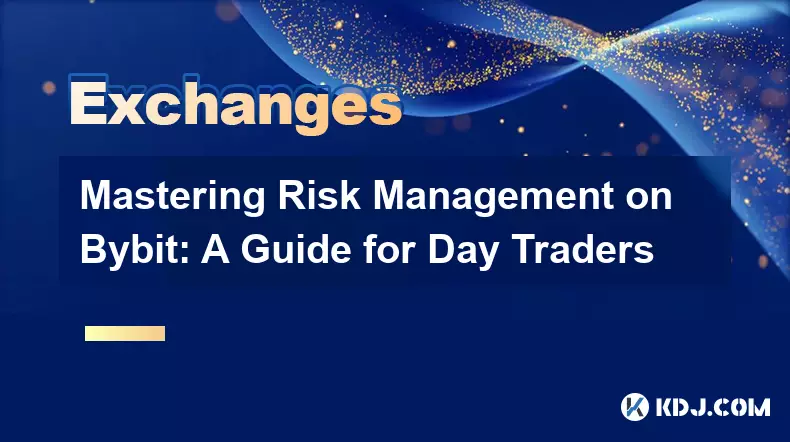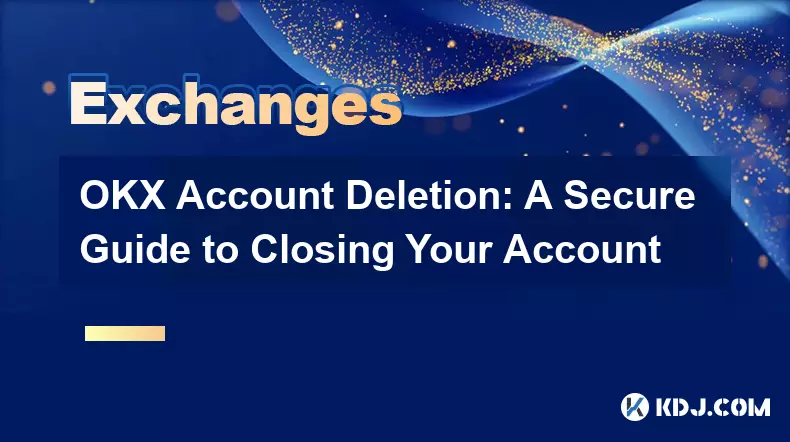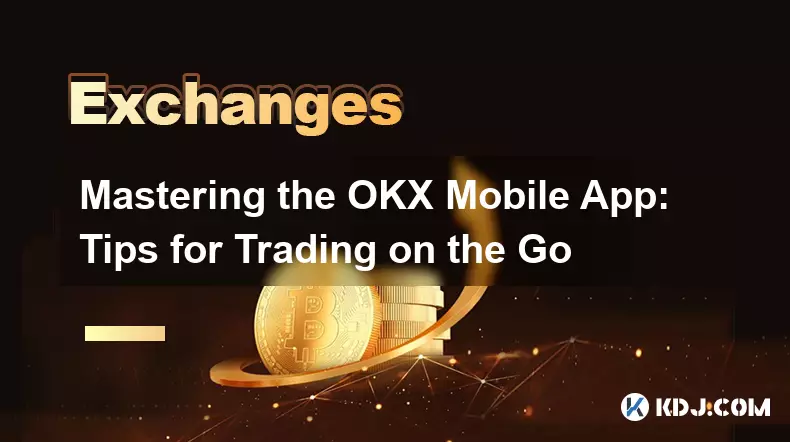-
 bitcoin
bitcoin $101752.865364 USD
-1.09% -
 ethereum
ethereum $3382.985899 USD
-1.38% -
 tether
tether $0.999658 USD
0.04% -
 xrp
xrp $2.272505 USD
-1.51% -
 bnb
bnb $989.089004 USD
0.14% -
 solana
solana $156.962612 USD
-3.08% -
 usd-coin
usd-coin $0.999776 USD
0.01% -
 tron
tron $0.290786 USD
-0.69% -
 dogecoin
dogecoin $0.174594 USD
-2.86% -
 cardano
cardano $0.560085 USD
-3.55% -
 hyperliquid
hyperliquid $40.023704 USD
-5.75% -
 chainlink
chainlink $15.324649 USD
-2.78% -
 bitcoin-cash
bitcoin-cash $493.576540 USD
-3.52% -
 zcash
zcash $571.320038 USD
-12.05% -
 stellar
stellar $0.280066 USD
-4.26%
Mastering Risk Management on Bybit: A Guide for Day Traders
Crypto markets are highly volatile, driven by sentiment and news, so traders on Bybit should use stop-losses, manage leverage wisely, and monitor market signals to protect capital.
Nov 05, 2025 at 12:09 am

Understanding Volatility in the Crypto Markets
1. Cryptocurrency markets are known for their extreme price swings, often driven by sentiment, macroeconomic news, and on-chain activity. Day traders on Bybit must remain vigilant about these shifts to avoid unexpected losses.
2. High volatility can create profit opportunities but also increases the risk of liquidation, especially when using leverage. Monitoring tools like the Fear & Greed Index or funding rates can help assess market mood before entering a position.
3. Assets such as Bitcoin and Ethereum may exhibit lower relative volatility compared to altcoins, yet even major coins can experience 10%+ moves within hours during high-impact events like exchange hacks or regulatory announcements.
4. Using historical volatility data available on Bybit’s charts allows traders to compare current price action against past behavior, helping identify whether the market is entering an abnormally turbulent phase.
5. Setting alerts for sudden volume spikes or unusual order book depth changes enables proactive responses rather than reactive decisions when volatility surges unexpectedly.
Setting Effective Stop-Loss and Take-Profit Levels
1. A well-placed stop-loss acts as a safety net, automatically closing a position when the market moves against you beyond a predefined threshold. On Bybit, traders can use both fixed-price and trailing stop options depending on strategy needs.
2. Never enter a trade without defining your maximum acceptable loss in advance. This discipline prevents emotional decision-making during fast-moving markets and protects capital over time.
p>3. Take-profit levels should be based on technical resistance zones, Fibonacci extensions, or recent swing highs rather than arbitrary price targets. Aligning exits with key chart levels improves consistency.
4. Consider using multiple take-profit stages—closing part of the position at initial targets and letting the remainder ride with a trailing stop to capture extended momentum if it occurs.
5. Backtesting your stop-loss and take-profit placements against previous trades helps refine optimal distance from entry, balancing between giving trades room to breathe and avoiding excessive drawdowns.
Leverage Management and Position Sizing
1. Bybit offers up to 100x leverage on certain perpetual contracts, but utilizing maximum leverage drastically increases liquidation risk even with small adverse price movements.
2. Most successful day traders on Bybit use 5x to 10x leverage or less to maintain breathing room under volatile conditions. Lower leverage reduces pressure on stop-loss placement and enhances psychological comfort during trades.
3. Position size should be calculated based on account equity and individual trade risk tolerance—typically no more than 1% to 2% of total capital per trade to ensure longevity through losing streaks.
4. Use Bybit’s built-in risk calculator when opening orders to visualize liquidation price and potential margin requirements before confirming execution.
5. Adjust position size dynamically when trading different assets; low-cap altcoins require smaller sizes due to higher volatility and slippage risks compared to large-cap pairs like BTC/USDT.
Frequently Asked Questions
How does funding rate affect my open positions on Bybit?Funding rates are periodic payments exchanged between long and short traders on perpetual contracts. If you hold a long position when funding is positive, you pay shorts; if negative, you receive payment. These rates fluctuate every 8 hours and can accumulate over time, impacting profitability on longer-term intraday holds.
Can I automate my risk management settings on Bybit?Yes, Bybit supports conditional orders including stop-loss, take-profit, and trailing stops that activate upon specific price triggers. Traders can set these parameters when placing new orders or modify them after entry through the active orders tab.
What happens when my position gets liquidated?Upon reaching the liquidation price, Bybit closes your position automatically to prevent further losses beyond your margin. The platform uses an insurance fund to cover residual deficits, though partial clawbacks from unrealized PNL may occur in extreme scenarios.
Is hedging allowed on Bybit for risk mitigation?Bybit permits hedging, allowing traders to hold both long and short positions simultaneously on the same symbol. This feature supports complex strategies like delta-neutral trading or locking in profits while maintaining market exposure.
Disclaimer:info@kdj.com
The information provided is not trading advice. kdj.com does not assume any responsibility for any investments made based on the information provided in this article. Cryptocurrencies are highly volatile and it is highly recommended that you invest with caution after thorough research!
If you believe that the content used on this website infringes your copyright, please contact us immediately (info@kdj.com) and we will delete it promptly.
- Ripple (XRP) in 2026: Hold or Fold? A Look at XRP's Future and Emerging DeFi Alternatives
- 2025-11-08 18:35:01
- Zcash ZEC Coin Price Explosion: From Privacy Niche to Center Stage
- 2025-11-08 18:55:01
- Berachain Price Prediction: Navigating the Honeycomb Hype in Crypto
- 2025-11-08 18:55:01
- Arthur Hayes, Gold, and Bitcoin: A Modern Monetary Trinity?
- 2025-11-08 19:15:01
- Shiba Inu's Next Move: Navigating a Shifting Market
- 2025-11-08 19:20:01
- Pakistan's Crypto Crossroads: Balancing Opportunity with Asset-Backed Realities
- 2025-11-08 19:20:01
Related knowledge

Common Mistakes to Avoid on OKX: A Guide for New Traders
Nov 04,2025 at 03:37pm
Understanding the Interface Before Trading1. New traders often jump into placing orders without fully exploring the OKX platform layout. Taking time t...

OKX TradingView Integration: A Guide to Advanced Chart Analysis
Nov 02,2025 at 03:37am
OKX and TradingView: Bridging the Gap for Professional Traders1. OKX, one of the leading cryptocurrency exchanges, has integrated with TradingView to ...

Finding Your OKX Deposit Address: A Quick and Safe Guide
Nov 05,2025 at 01:15pm
Finding Your OKX Deposit Address: A Step-by-Step Process1. Log into your OKX account using your registered credentials. Ensure you are accessing the o...

OKX Savings Guide: A Low-Risk Strategy for Earning Crypto
Nov 05,2025 at 06:55am
Understanding OKX Savings and Its Role in Crypto Earnings1. OKX Savings offers users a straightforward method to earn passive income by leveraging idl...

OKX Account Deletion: A Secure Guide to Closing Your Account
Nov 05,2025 at 08:44am
Understanding the Implications of Account Closure1. Closing your OKX account permanently removes access to all associated trading features, including ...

Mastering the OKX Mobile App: Tips for Trading on the Go
Nov 05,2025 at 01:19am
Streamlined Navigation for Efficient Trading1. The OKX mobile app features a clean and intuitive interface that allows traders to access key functions...

Common Mistakes to Avoid on OKX: A Guide for New Traders
Nov 04,2025 at 03:37pm
Understanding the Interface Before Trading1. New traders often jump into placing orders without fully exploring the OKX platform layout. Taking time t...

OKX TradingView Integration: A Guide to Advanced Chart Analysis
Nov 02,2025 at 03:37am
OKX and TradingView: Bridging the Gap for Professional Traders1. OKX, one of the leading cryptocurrency exchanges, has integrated with TradingView to ...

Finding Your OKX Deposit Address: A Quick and Safe Guide
Nov 05,2025 at 01:15pm
Finding Your OKX Deposit Address: A Step-by-Step Process1. Log into your OKX account using your registered credentials. Ensure you are accessing the o...

OKX Savings Guide: A Low-Risk Strategy for Earning Crypto
Nov 05,2025 at 06:55am
Understanding OKX Savings and Its Role in Crypto Earnings1. OKX Savings offers users a straightforward method to earn passive income by leveraging idl...

OKX Account Deletion: A Secure Guide to Closing Your Account
Nov 05,2025 at 08:44am
Understanding the Implications of Account Closure1. Closing your OKX account permanently removes access to all associated trading features, including ...

Mastering the OKX Mobile App: Tips for Trading on the Go
Nov 05,2025 at 01:19am
Streamlined Navigation for Efficient Trading1. The OKX mobile app features a clean and intuitive interface that allows traders to access key functions...
See all articles





















![The Graph Price Prediction [GRT Crypto Price News Today] The Graph Price Prediction [GRT Crypto Price News Today]](/uploads/2025/11/07/cryptocurrencies-news/videos/690d4df44fe69_image_500_375.webp)



















































